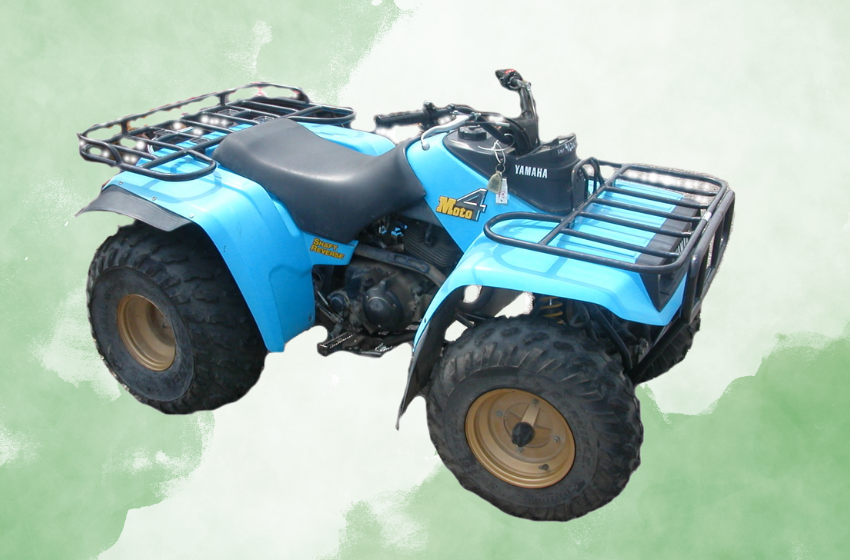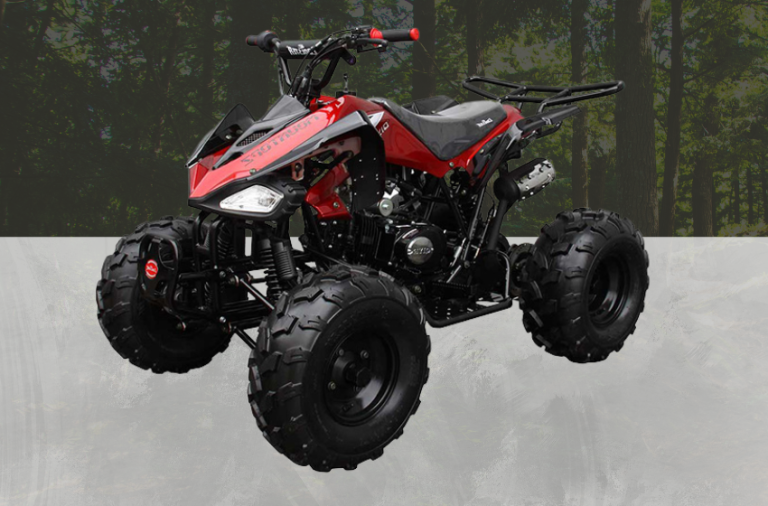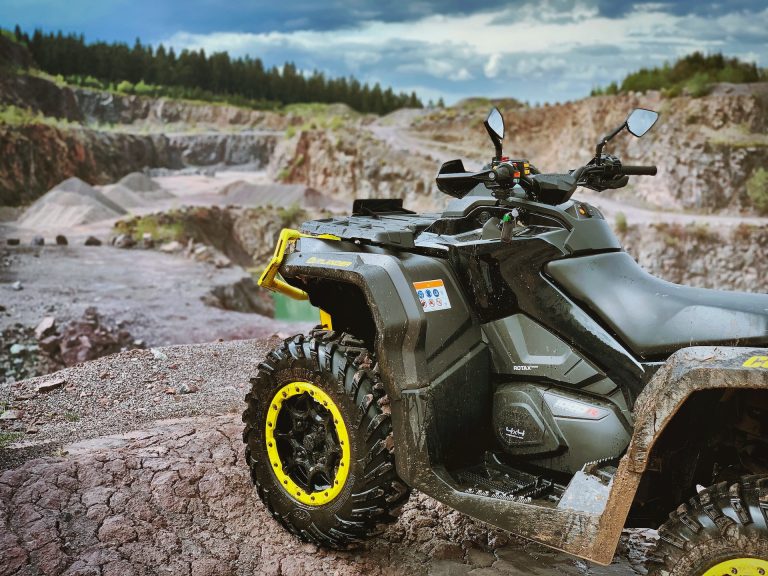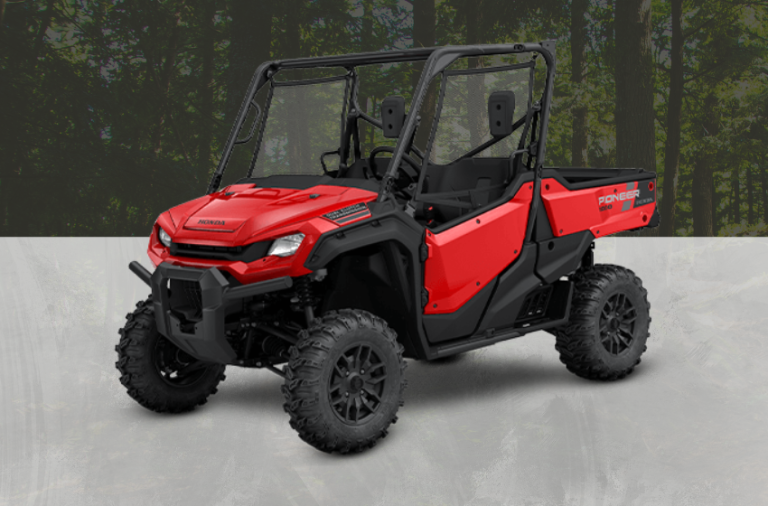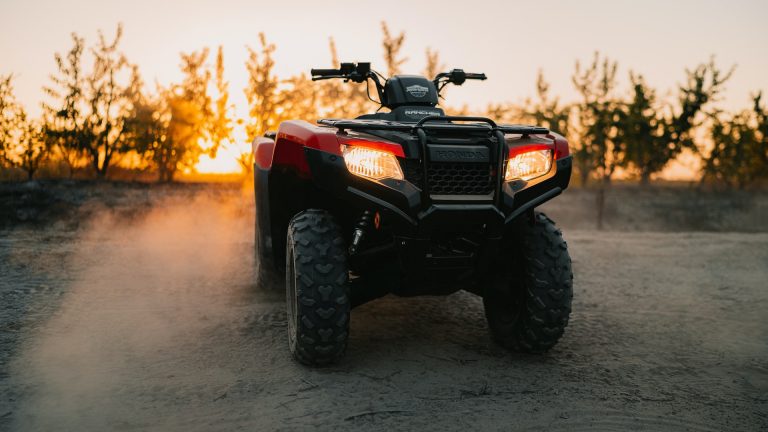Yamaha Moto 4: Top Speed & Specs
The Moto 4 represents a time in the development of ATVs when most manufacturers still considered three wheels to be better than four, and it has been updated and redesigned several times throughout its history.
The Yamaha Moto 4, manufactured by the Yamaha Motor Company, was a ground-breaking vehicle that revolutionized the industry. It was first introduced in 1985 and was marketed as an “off-road” bike.
Now, ATVs have reached their peak with more and more people buying them for fun and work. One thing is certain: with the right modifications, design, and control features, the Yamaha Moto 4 can keep up with the best and most high-tech ATVs on the market.
Table of Contents
- Yamaha’s History
- Yamaha Moto 4 Specs
- Yamaha Moto Features
- Are you looking for a used Yamaha Moto 4?
- Final Thoughts
Yamaha’s History
Yamaha is a Japanese company that was established back in 1955. It is one of the most renowned motorcycle manufacturers in the world.
The Moto 4 was introduced in 1985 during the all-terrain vehicle (ATV) scene’s shift toward three-wheel designs. At that time, all-terrain vehicles (ATVs) were already powerful, but they were not stable or safest to ride on uneven surfaces. Yamaha’s engineers saw these issues and wanted to make an impact by developing four-wheel models.
When it comes to Yamaha ATVs, the first thing that comes to mind is perhaps their famous V-Twin (Yamaha YFZ350) and the V-Max. But the second most famous Yamaha ATV is the classic Yamaha Moto 4 350. The original 1985 version, produced through 1985, 1986, 1987, and 1988 years became immensely popular because of its various advantages.
The Yamaha’s Moto-4 350 ATV sports a whopping 329-cc (1360 cc) engine, which makes it one of the smallest four-cylinder vehicle engines ever built by Yamaha. The power this engine produces is also quite large, considering its size.
Also, the rear and front racks of the Moto 4 allowed riders to store their bikes and other equipment more efficiently. Its improved stability and handling made it ideal for utility and recreation.
Yamaha Moto 4 Specs
When it comes to performance, the Yamaha Moto 4 is one of the best. With a top speed of 45 to 50 mph, this bike will get you from A to B faster than its competitors.
Some specs of the Yamaha Moto 4 include:
Engine
A four-stroke SOHC engine is powered by a single-cylinder, air-cooled unit with a bore of 67 millimeters and an output of 55.7 millimeters. It can be forward-inclined and has a displacement of 196 cubic centimeters.
A carburetor known as a Mikuni handles the air-fuel mixture. Its compression ratio is 8.5:1, and its pressure is 883 kPa. Fuel tank capacity is approximately 2.5 US gallons and 9.5 liters.
The Yamaha Moto 4 engine is a four-stroke single-cylinder motorcycle engine. It features a displacement of 110cc and produces 8.9 horsepower at 9,000 rpm. The engine uses a chain drive transmission system and is equipped with a wet sump lubrication system.
Drive Train
The Yamaha Moto 4 drivetrain consists of a two-speed transmission with a final drive ratio of 1:1.8. The front wheel is driven via a chain drive system, while the rear wheel is driven using a belt drive system.
Power is transmitted through an automatic 5-speed constant mesh gearbox, including the reverse gear. Two-wheel drive with a maximum output of 11.5 kW (15.6 hp)/7,500 rpm. Later versions from 225cc to 350cc come with manual transmissions and 4WD options.
Ignition
The Yamaha Moto 4 ignition system is a magneto ignition system. It uses a coil, distributor, and spark plug.
Brakes
The Yamaha Moto 4 brake system includes a master cylinder, front and rear disc, and drum brakes.
Suspension
The Yamaha Moto 4 suspension system includes telescopic forks and shock absorbers.
The Moto 4 features a swing axle front suspension and a proven monocross rear suspension. Both are designed with agility in mind. Look to your left, and you’ll see the swing arm. Just keep going – you’ll see each wheel rotates independently of the others for superior stability and handling.
Dimensions
The size of the Yamaha Moto 4 is not as large as it looks. It has a lightweight body frame, with its overall length being 68.9 inches (U.S.) and 72.8 inches (all other markets).
The width is 41.1 inches, the height is 40 inches, and the minimum ground clearance is 8.3 inches —which means you can drive this car in places where there are no sidewalks or roads for many miles away from home or work, but there are only flat or downhill areas where it’s easy to park.
Exterior
It boasts a rugged steel frame and plastic body material, including front and rear fenders. The ’85 model features a snorkel air intake and front and rear racks.
Yamaha Moto Features
Yamaha is an iconic brand of motorcycles and ATVs that have been in the market for over 50 years. Yamaha builds two major models, those being the 2-stroke and 4-stroke motorcycles.
The company also makes ATVs, which are divided into different segments based on the engine used in them.
Price
The Yamaha Moto 4 can reach speeds of over 50 miles per hour. It also features a five-gallon gas tank that allows riders to travel long distances without stopping and refueling. The original retail price of the Yamaha Moto 4 was $2,499.00.
Parts
Yamaha Moto 4 parts are sold separately and are different depending on what type of Yamaha Moto 4 you own. The Yamaha Moto 4 parts included a carburetor, muffler, spark plugs, oil filter, air cleaner, starter motor, clutch, brake pads, and tires.
If you want to keep your Yamaha Moto 4 in working order, then you should buy the right parts. Also, you may need to replace some parts after a few years of use.
Accessories
Several accessories came along with the Yamaha Moto 4. These include a tool kit, kickstand, windshield, and a spare tire.
The tool kit comes with a wrench set, screwdriver, pliers, a flashlight, a jack, a socket set, and a hammer. The kickstand is used to hold the bike upright while riding, Yamaha added the windshield to protect the rider from the elements, and spare tires are necessary if you are going off-road.
Repairs
Repairing the Yamaha Moto 4 is easier than you think. All you have to do is take the bike apart and reassemble it. The hardest part of repairing the Yamaha Moto 4 is getting the parts, which can be found at most auto parts stores.
Fuel Injection
Fuel injection was a feature that was added to the Yamaha Moto 4 in 1988. This meant that the engine did not have to work as hard to get the bike moving. The Yamaha Moto 4’s fuel injection system worked well. However, the Yamaha Moto 4 did not last long once the fuel injection system failed.
Are you looking for a used Yamaha Moto 4?
When you’re looking around for a used Yamaha Moto 4, it’s important to know what to look for. There are dozens of buyers, so you want to make sure you’re getting the best deal possible. Some things to look out for include:
Carburetor
The Mikuni carburetor is known for its durability and great performance. However, as is common in all machines, it sometimes requires cleaning or replacement.
Oil
If you are looking to buy used four-wheelers, one of the most important steps is to inspect the state of your oil. Since the Moto 4 comes with a strong frame and tough body, you might have never thought about checking its oil.
In fact, it’s not just checking the oil filter which matters here. The condition of the entire engine sitting inside the frame deserves your attention as well.
Hardware
You should first inspect every nut and bolt on your motorized vehicle to see if anything is loose. If they are all nice and tight, move on to the bearings, kingpin, and wheels because they are most likely the ones causing your vehicle to get jerky while riding.
Suspension
The suspension of the Yamaha Moto 4 needs to be stiffer and more rigid. A frame or swingarm is designed to absorb bumps in the road so that your bike doesn’t bounce too much. Various factors affect the overall performance of the suspension.
The first thing to check before buying a used vehicle is the amount of wear and tear on its suspension components. A second-hand bike might not have all its parts properly adjusted, which means you might need to replace some parts yourself.
Final Thoughts
The Yamaha Moto 4 is a durable bike that can withstand heavy usage even in the most difficult of conditions. It is still considered one of the best ATVs for weekend or daily activities and has been a favorite among riders since its inception.
It is no surprise that people want a tough, powerful ATV. What’s surprising is how many prefabrication vehicles are also sought after by buyers. So if you’re getting ready to go off-roading and you need an ATV, try out the Yamaha Moto 4. You’ll be glad you did.

